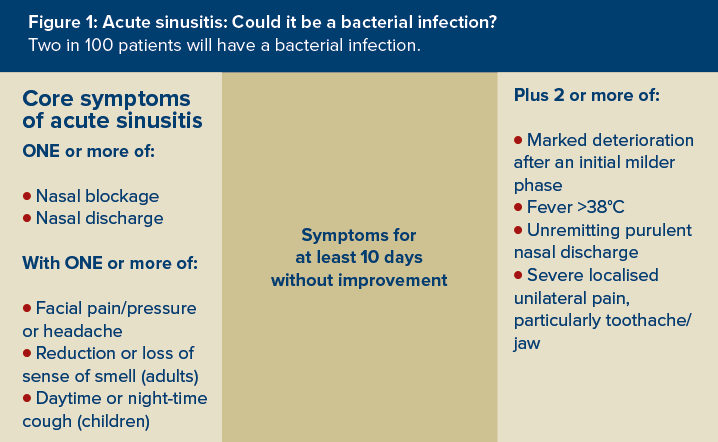When to suspect acute sinusitis
The presence of ONE of the following signs/symptoms suggests acute sinusitis:
- Nasal blockage (obstruction/congestion) OR
- Nasal discharge (anterior/posterior nasal drip).
AND ONE or more of the following:
- Facial pain/pressure (or headache) OR
- Reduction (or loss) of the sense of smell (in adults) OR
- Cough during the day or at night (in children).
There may be a reduction or loss of the sense of smell. Other features suggestive of acute sinusitis are altered speech indicating nasal obstruction, and tenderness, swelling or redness over the cheekbone or periorbital areas.
To diagnose sinusitis, symptoms should have been present for 10 days or more with little improvement.
Most cases of sinusitis are improving by day 10 and resolve in two to three weeks. Chronic sinusitis is defined as symptoms lasting for more than 12 weeks. Symptoms for around 10 days or less are more likely to be associated with a preceding cold rather than viral or bacterial acute sinusitis.
Associated symptoms include:
- The affected sinus often feels tender when pressure is applied. It is typically worse on bending forwards or lying down
- The pain may be felt behind and around the eye, or over the cheek, with radiation over the forehead and often only one side is affected
- The headache may be associated with runny nose or nasal congestion
- Fever (above 38°C) is usually an indication of bacterial infection.
If there has been a marked deterioration in sinusitis symptoms following a recent cold that had started to settle (so called ‘double sickening’) this may be an indication of bacterial infection. The features of a bacterial infection are summarised in Figure 1.

